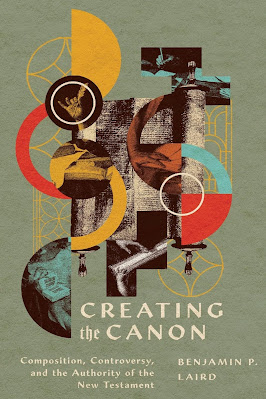A friend notified me of a recent episode of "The Breifing" by Albert Mohler where he addresses a question sent to him by a listener. You can hear the question and Mohler's response at the following link.
This isn't the exact wording of the question, but it went something like this.
"How can we say that the Bible we have is inerrant only in the originals? If our translations today could have small errors over time, can we really say that the Bible is perfect?"
The questioner indicated that this issue was causing him to doubt his faith. This really struck a cord with me because this is a very similar problem that drove me into studying New Testament textual criticism. Unfortunately I was a little disappointed by Mohler's response, which sounded more like a dodge to me. With that said, his answer was honest and transparent about the limitations of his own knowledge of the topic.
I wanted to briefly address this question, though a full throated response would necessitate a book.
There is a theological problem that is revealed by the way the question is worded. The concept of divine preservation is confused and lumped in with divine inspiration, and thus, inerrancy and these two theological ideas must be understood as two different events.
Divine Inspiration of Scripture:
Inspiration was a one time event that occured through the apostles and prophets as they were moved by the Holy Spirit (2 Peter 1:20-21). Paul told Timothy that all scripture (γραφη) is God-breathed (2 Timothy 3:16-17). Because Peter mentions words that were spoken and Paul uses the term γραφη, inspiration must therefore be limited to certain people (apostles and prophets) at an appointed time (while speaking or when writing) and limited to specific words (being spoken and or written). These scriptural references also reveal that there was a divine confluence in this event, the Holy Spirit worked through men who spoke or wrote.
Because God is the one who moved the men to write, then it must mean that there is no untruthfulness or mistakes in what was conveyed through these men (Numbers 23:19, Titus 1:2, Hebrews 6:18). However, because men of a certain age and culture were moved to speak and write, then actual human languages, couched within specific cultures and countries were employed (Hebrew, Aramaic, Koine Greek).Once the inspiration event was over, the documents were released for copying, circulation, and dispatched to Churches (in the case of the epistles), then the inspiration event was over.
Preservation of Scripture through Fallible Human Agency:
Now ordinary men were given charge over copying and distributing God's word. In Deuteronomy 17:18, the King is charged with making a copy of God's Law, and the priests are charged with keeping master copies. Yet they failed in their tasks, the kings failed to follow God's commands and the priests lost track of the copies of the law (Hosea 4:6, 2 King's 22:8-10). In the New Testament, men are entrusted to spread the Gospel (Matthew 28:19-20), this involved copying out the scriptures to be distributed (Colossians 4:16). Yet, even then, the apostolic message was twisted, which is what happened in the case of Paul's letters (2 Peter 3:15-16). Already within one hundreds years of the time of the apostles errors had found their way into copies of the scriptures that were circulating. Irenaeus (180 CE), in his Against Heresies, 5.30.1., mentions that some copies of Revelation had the mark of the beast as 616 rather than 666.
Finally, another problem with the way the original question was worded was that it confused the wording of the inspired autographs or "originals" with a physical object. It must be understood that it is the wording, the text that was inspired not a physical document (such as papyrus, or parchment). As long as the wording is faithfully transcribed, then the copy is also inspired. Because fallible men have been entrusted with transcribing and transmitting the scriptures, however, there are imperfections in the extant copies. This means that our access through our imperfect manuscripts to inerrant inspiration has some limitations. These textual variations in the manuscripts are human errors of transcription, not errors of inspiration. Though our access to God's inerrant word has some limitation, our access is sufficient for knowing and understanding the message of salvation.
_________________________
For a transcript of "The Breifing" go to the following link, under "Part II".
For a fuller treatment of these topics, see my two articles below.
Where Inspiration is Found: Putting the New Testament Autographs in Context,” in Southern Baptist Journal of Theology 24.3 (Fall 2020): 83-101.


























